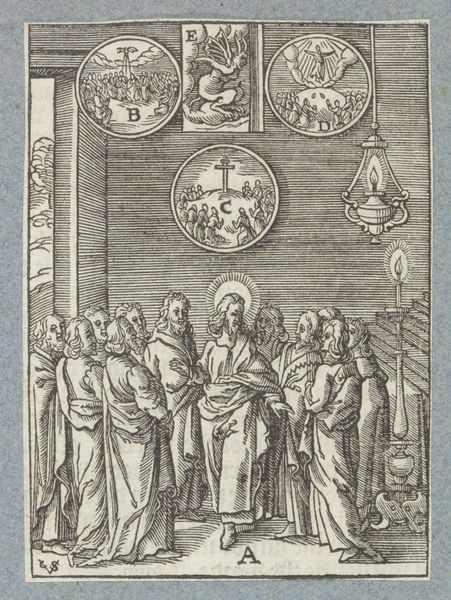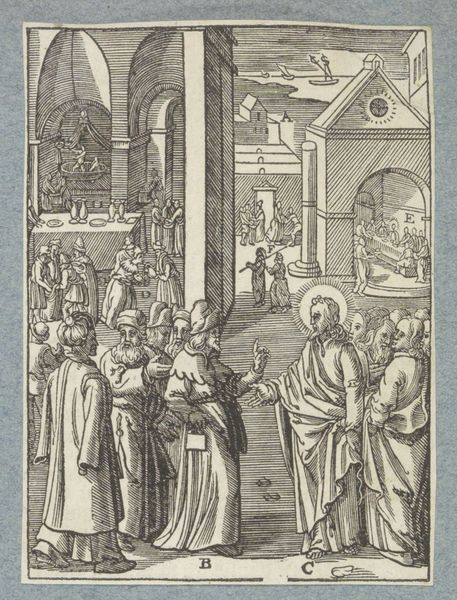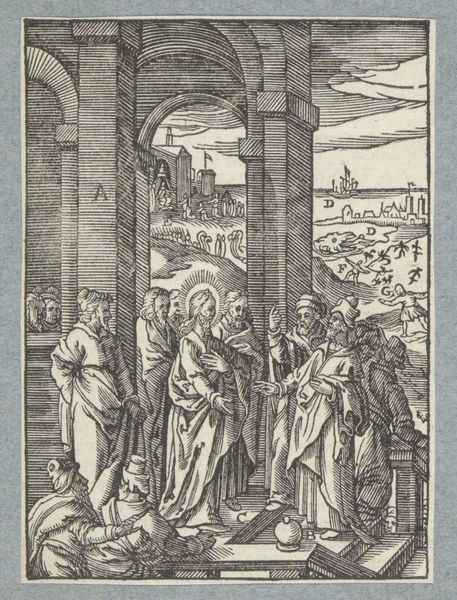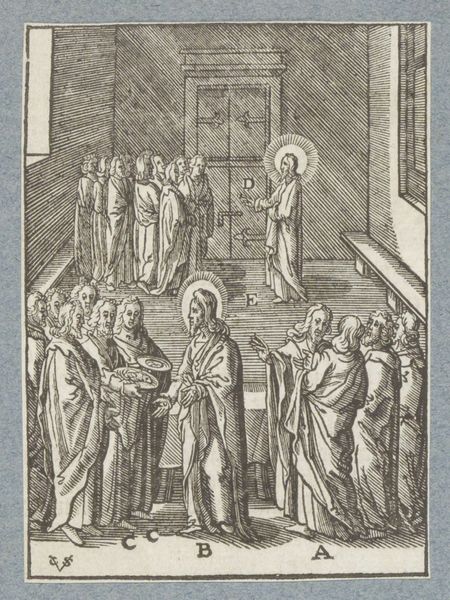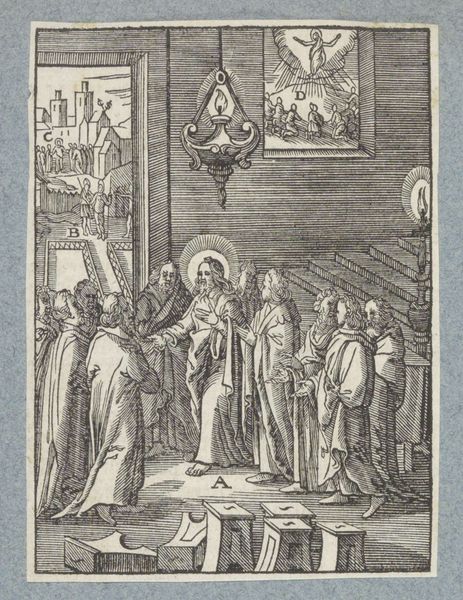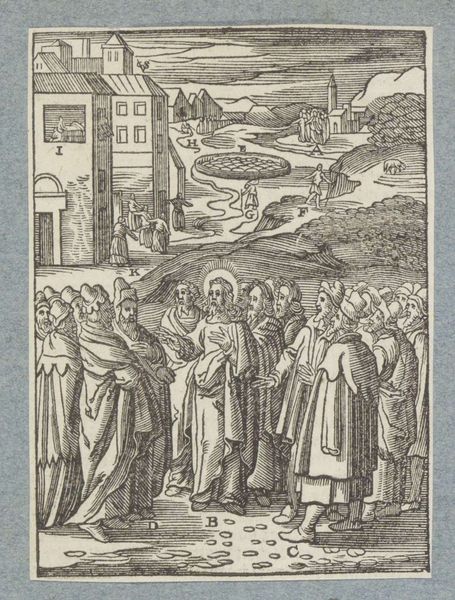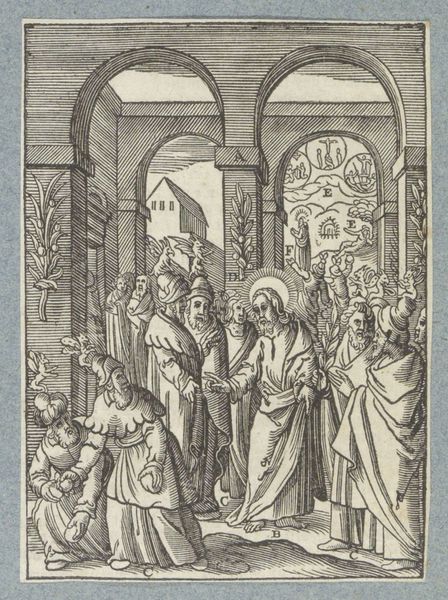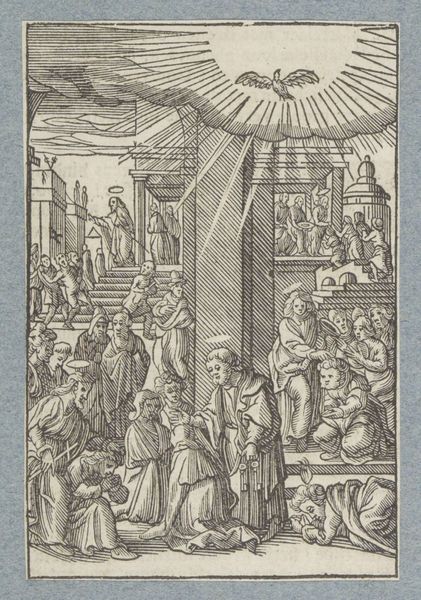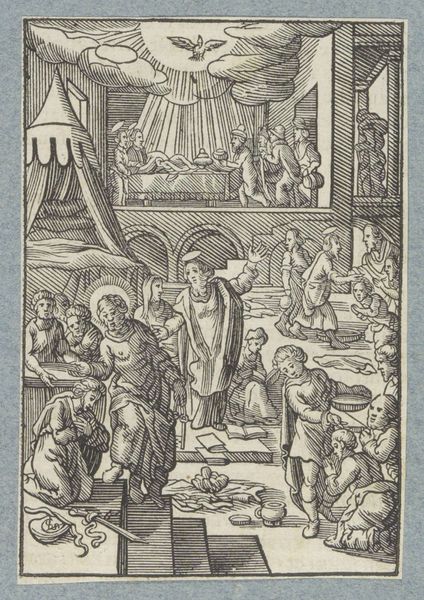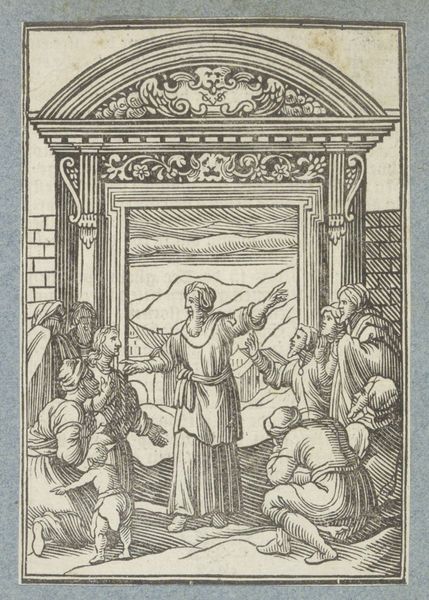
print, engraving
# print
#
figuration
#
line
#
history-painting
#
northern-renaissance
#
engraving
Dimensions: height 102 mm, width 74 mm
Copyright: Rijks Museum: Open Domain
Editor: Here we have Christoffel van Sichem the Younger’s 1629 engraving, “Christus predikt over het gebed,” which translates to "Christ Preaching about Prayer." I’m immediately struck by the figures. They seem almost caught between reverence and skepticism. What’s your take? Curator: Well, beyond the immediate depiction, this engraving opens a dialogue about power, faith, and social hierarchy in 17th-century Netherlands. Look closely at Christ's central positioning versus the groupings around him. What might that visual structure communicate about societal power dynamics related to religious authority at the time? Editor: It does place Christ at the forefront. The circles in the top panel each tell different episodes of his life, further solidifying his journey…but the crowds in the bottom half all seem very close to him and similar to one another. Curator: Exactly. Sichem, through the lens of the Northern Renaissance, hints at the increasing accessibility of religious texts and interpretations to the common person. Notice the print medium. Who do you think had access to it, and how might it shape interpretations of faith? Editor: So, prints like these weren't just about depicting a scene, but about contributing to a broader cultural shift? Were they intended to engage different social classes, creating an active conversation? Curator: Precisely. By reproducing biblical scenes, printmaking democratized religious narratives, offering opportunities for individual reflection and interpretation – although with some strong bias due to the patriarchal nature of religious teachings. Do you think that democratization of belief challenges or reinforces existing power structures? Editor: It feels like both. Access to interpretations could empower individuals. Yet, if the interpretation favors the existing leadership it would not change social inequities. Thank you, I will look more into how artwork and prints can influence faith in various populations. Curator: Indeed. Looking through an intersectional lens, art acts as a powerful tool. Thank you, too. It is good to reaffirm how we perceive these artworks through contemporary contexts.
Comments
No comments
Be the first to comment and join the conversation on the ultimate creative platform.
